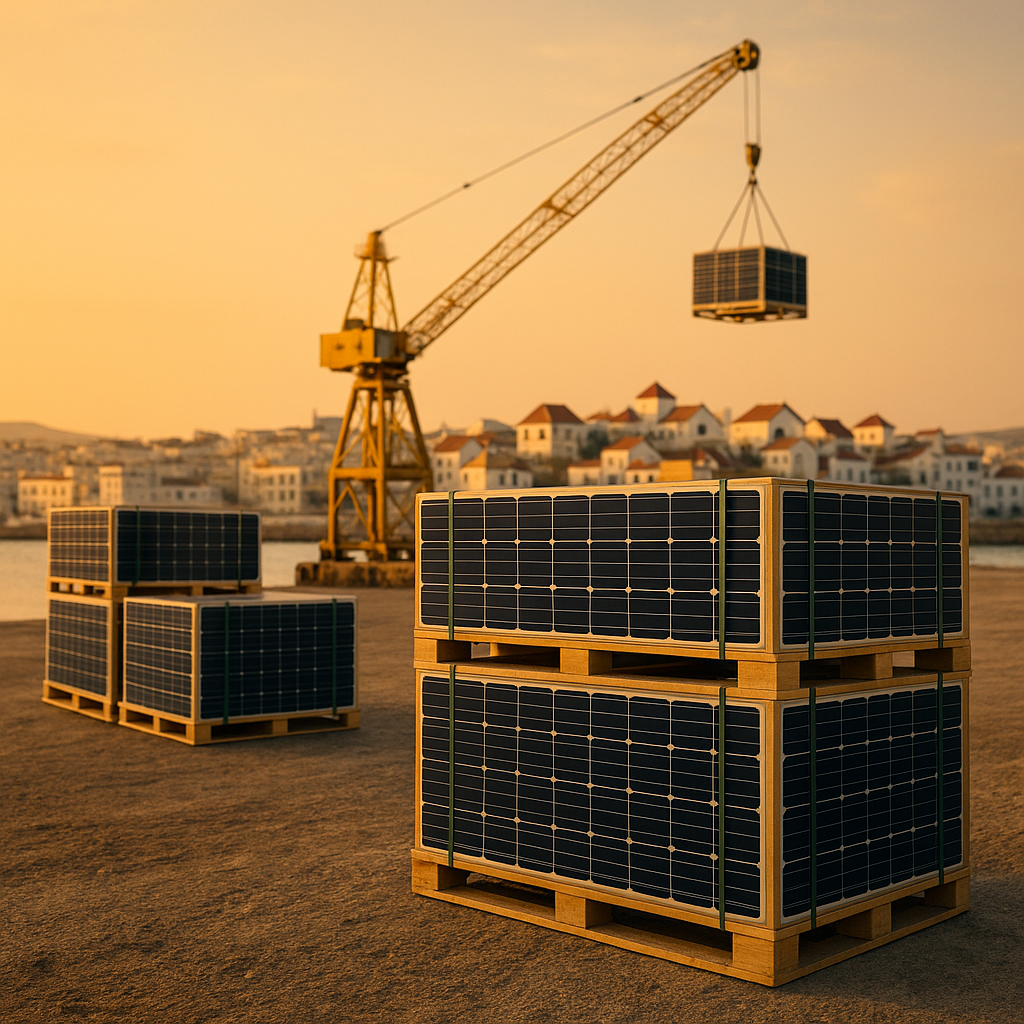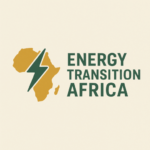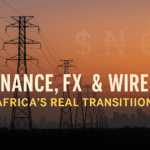Par un matin brumeux à Alger, un camion à plateau se faufile dans la circulation, chargé de panneaux photovoltaïques sous film rétractable. C'est un spectacle de plus en plus courant. De la côte nord-africaine au SahelUn continent se tourne vers l'énergie solaire à une vitesse sans précédent. Les chiffres à l'origine de cette tendance sont stupéfiants, forçant les décideurs politiques, la société civile et les investisseurs à se poser une nouvelle question. L'Afrique accède-t-elle enfin à une énergie abondante et bon marché, ou s'enfonce-t-elle simplement dans une nouvelle forme de dépendance ?
Les données douanières chinoises montrent que l'Afrique a acheté un record de 1,57 GW de panneaux solaires rien qu'en mai 2025, avec au moins 22 pays africains important plus de modules au cours des cinq premiers mois de 2025 qu'au cours de la même période en 2024. L'Algérie se distingue comme le cas le plus spectaculaire, avec 0,76 GW importés en seulement six mois, soit une augmentation ahurissante de 6 300 TP3T en glissement annuel. Il ne s'agit pas de changements mineurs dans les achats ; ils témoignent d'un changement structurel.
L'enjeu n'est pas seulement une question de volumes, mais aussi de diversité. Contrairement aux précédentes vagues d'énergie solaire, concentrées sur quelques grands marchés comme l'Afrique du Sud, le Kenya et le Maroc, la vague actuelle se propage largement dans les petites et moyennes économies. Du Sénégal à l'Éthiopie, les systèmes sont commandés et livrés à un rythme jamais vu auparavant. Cela témoigne d'un appétit pour le solaire à l'échelle du continent, à la fois comme choix de consommation et comme nécessité stratégique.
Pourquoi maintenant ? L'effondrement des prix est dû à la faiblesse des politiques.
Le facteur immédiat de cette hausse est l’effondrement historique des prix des modules solaires. La Chine est devenue la puissance incontestée de la production mondiale de panneaux, produisant plus de 120 GW de modules au premier semestre 2025. Une offre excédentaire a fait chuter les prix internationaux à des niveaux jugés impossibles il y a quelques années seulement. Pour les acheteurs africains, cela a été une véritable transformation ; soudain, le solaire est devenu non seulement propre, mais aussi la forme d'énergie la moins chère.
Dans de nombreux pays africains, les politiques énergétiques ont été, au mieux, ambivalentes. Les obstacles réglementaires, les incertitudes tarifaires et les distorsions des subventions freinent souvent le déploiement des énergies renouvelables. Pourtant, lorsque les panneaux sont disponibles à des prix historiquement bas, les consommateurs, les coopératives et même les municipalités trouvent des solutions pour progresser malgré l'inertie nationale. Le prix, plutôt que l'ambition politique, explique l'essor actuel..
Cependant, le prix n'est pas le seul facteur. Les tendances mondiales en matière de décarbonation, les mécanismes de financement des donateurs et l'urgence de remédier à la faiblesse des réseaux électriques ont tous joué un rôle. Sur tout le continent, les pénuries d'électricité demeurent chroniques. En Afrique du Sud, où les délestages font la une des journaux depuis plus de dix ans, l'énergie solaire décentralisée abordable allège enfin la pression sur le réseau. Pour les petits pays dotés de réseaux électriques plus fragiles, l'énergie solaire sur les toits et les mini-réseaux ne sont pas seulement des compléments ; ce sont des bouées de sauvetage.
L’avantage : démocratiser l’accès au pouvoir
Les panneaux solaires bon marché ne sont pas seulement un rêve pour les ingénieurs ; ils constituent un outil de développement. Les écoles peuvent stabiliser les environnements d'apprentissage grâce à une alimentation électrique ininterrompue. Les cliniques peuvent réfrigérer les vaccins sans craindre les coupures. Les petites entreprises, des salons de coiffure aux cybercafés, peuvent réduire considérablement leurs coûts de diesel. Pour les communautés rurales, où l'extension du réseau électrique pourrait prendre des décennies, les systèmes sur les toits et les mini-réseaux offrent un avant-goût réel de l'énergie moderne.
Il est important de noter que cette vague solaire est particulièrement décentralisée. Les précédentes initiatives en faveur des énergies renouvelables se concentraient souvent sur de grands projets d'utilité publique négociés dans le cadre de contrats de longue durée. Aujourd'hui, davantage de ménages et de petites entreprises installent des systèmes de manière indépendante, favorisant ainsi une transition énergétique ascendante. Cette décentralisation accélère non seulement l'accès, mais répartit également la résilience de manière plus équitable au sein des sociétés.
Au niveau macroéconomique, chaque kilowattheure produit derrière le compteur allège la pression sur les réseaux de transport fragiles et diminue la dépendance à une production d'urgence coûteuse. Dans des pays comme le Nigeria, le Ghana et l'Ouganda, où les générateurs diesel définissaient autrefois le paysage sonore urbain, les importations d'énergie solaire commencent à modifier l'équilibre. Les organisations de la société civile soulignent qu'une telle adoption décentralisée peut réduire considérablement les émissions et les dépenses énergétiques des ménages, notamment si elle est soutenue par des microfinances ou des prêts concessionnels.
Le piège : un dilemme de dépendance
Pourtant, cette forte croissance met en évidence la vulnérabilité stratégique de l'Afrique. Presque tous les panneaux, onduleurs et boîtes de jonction sont importés. La capacité de production locale est négligeable en dehors de l'Afrique du Sud, de l'Égypte et du Maroc, et même là, elle reste modeste. Si quelques pays ont annoncé la construction d'usines d'assemblage, le passage à une production à pleine capacité s'est avéré difficile compte tenu des coûts financiers élevés, de l'incertitude de la demande et de la faiblesse des infrastructures.
La dépendance ne concerne pas seulement la technologie ; elle concerne également la macroéconomie. Les panneaux peuvent être bon marché, mais les devises étrangères sont rares. Les primes de risque souveraines et la volatilité des devises gonflent les coûts des projets et compliquent les remboursements. Pour certains gouvernements, un dollar fort combiné à les remboursements élevés de dettes créent le paradoxe des panneaux qui sont abordables sur le marché mondial mais qui restent chers chez nous.
Cette dépendance soulève des questions complexes. Que se passerait-il si les entreprises chinoises réorientaient leur offre vers les marchés intérieurs ou augmentaient leurs prix à l'exportation ? Que se passerait-il si les différends commerciaux mondiaux rendaient les importations plus difficiles ? Les analystes de la société civile préviennent que l'essor de l'énergie solaire en Afrique pourrait être vulnérable à la même dépendance structurelle qui a historiquement pesé sur ses exportations de matières premières : une dépendance à l'égard de fournisseurs mondiaux avec une faible captation de valeur nationale.
Une échelle de localisation : renforcer les capacités africaines
Si les importations sont inévitables à court terme, la question à plus long terme est de savoir comment convertir l'essor actuel en capacités nationales de demain. Les analystes parlent d'une « échelle de localisation » qui permet à l'Afrique de capter progressivement davantage de valeur :
- La qualité et les normes avant tout : appliquer les normes de produits et les cadres de garantie pour protéger les consommateurs contre le dumping d’équipements de qualité inférieure.
- Assemblage avant la fabrication complète : Encourager l’assemblage local des cellules importées en panneaux, créant ainsi des emplois et formant une main-d’œuvre.
- Localisation des composants : Expansion dans la production de cadres, de verre, de câbles et de boîtes de jonction, des industries moins capitalistiques mais qui créent des retombées industrielles.
- Développement des compétences : Investir dans les centres d’EFTP, les systèmes de certification et les programmes de formation pour développer un vivier d’installateurs et d’ingénieurs certifiés.
- Chaînes d'approvisionnement régionales:Répartir les tâches de production entre les pays de la CEDEAO, de la CAE et de la SADC pour atteindre une échelle qu’aucun marché unique ne peut atteindre.
Les groupes de la société civile affirment qu'une telle échelle permettrait à l'Afrique de bénéficier non seulement de l'accès à l'énergie, mais aussi de l'industrialisation. Sans stratégie délibérée, les panneaux bon marché risquent de compromettre toute tentative de développement de chaînes d'approvisionnement locales. Avec une stratégie, les importations peuvent constituer un tremplin plutôt qu'un plafond permanent.
Toits et méga-parcs : les deux voies comptent
Les données actuelles sur les importations suggèrent une évolution du solaire à deux vitesses. En Afrique du Nord, des parcs géants à grande échelle sont en cours de développement, tirant parti de la proximité de l'Europe et de vastes étendues désertiques. Ces projets attirent des investisseurs internationaux et produisent rapidement des gigawatts. Parallèlement, en Afrique subsaharienne, l'essor est plus visible dans les toitures et les mini-réseaux – des installations plus petites, mais plus étendues et qui améliorent plus rapidement le bien-être.
Les deux pistes sont importantes. Les parcs à grande échelle témoignent d'un engagement politique et réduisent les prix de gros de l'électricité ; les systèmes décentralisés ont un impact immédiat sur les ménages et les PME. Pourtant, tous deux souffrent d'une incertitude politique. Les règles de facturation nette sont révisées du jour au lendemain, les droits d'importation fluctuent et les files d'attente pour les raccordements sont opaques. Il en résulte un risque pour les investisseurs et une frustration pour les consommateurs.
La leçon est que l'échelle et la résilience vont de pair. L'Afrique ne peut se permettre de se contenter de parcs géants en ignorant les toits qui touchent directement la vie des citoyens. Elle ne peut pas non plus s'appuyer uniquement sur la décentralisation sans réforme du réseau systémiqueUne approche de portefeuille équilibrée est la seule voie durable.
Attention aux données : les importations ne sont pas des installations
Une mise en garde s'impose. Les données douanières enregistrent les modules entrant dans les ports, mais pas leur utilisation finale. Les panneaux peuvent rester dans les entrepôts pendant des mois avant d'être installés. Certains peuvent être réexportés. Dans certains cas, des commandes spéculatives faussent les tendances à court terme. Les analystes soulignent la nécessité de compléter les données d'importation par des statistiques d'installation, des ventes d'onduleurs et des chiffres d'interconnexion au réseau.
Néanmoins, la tendance est indéniable. L'Afrique achète plus d'énergie solaire, plus vite et auprès d'un plus grand nombre de pays que jamais auparavant. Cette poussée est généralisée, touchant aussi bien les économies riches que les économies pauvres, et ne montre aucun signe de ralentissement. Le défi actuel n'est pas de savoir si l'Afrique peut accéder à des équipements solaires, mais de savoir si elle peut utiliser cette poussée pour renforcer durablement ses capacités et sa souveraineté.
L'essentiel
Les importations record d'énergie solaire en Afrique constituent à la fois un tournant et un miroir. Elles prouvent que le continent peut évoluer rapidement lorsque la technologie est abordable. Elles révèlent également d'anciennes vulnérabilités, des dépendances, une réglementation faible et un manque de politique industrielle.
Les importations qui illuminent aujourd'hui les salles de classe et les cliniques ne doivent pas devenir un avertissement pour demain. L'Afrique a la possibilité de profiter de cet essor pour stimuler les industries locales, la coopération régionale et la résilience des communautés. Le choix n'est pas entre les importations et l'isolement, mais entre la dépendance et l'autonomisation stratégique.
Pour la société civile, les décideurs politiques et les bailleurs de fonds, le message est clair : exploiter l’essor économique actuel de l’énergie solaire, tout en construisant les fondations de la souveraineté énergétique de demain. Si le continent y parvient, la prochaine vague de gros titres sur le solaire ne portera pas uniquement sur les importations, mais sur les solutions africaines qui alimenteront l’avenir de l’Afrique.
Suivre Transition énergétique en Afrique pour plus de mises à jour :
![]()
![]()



